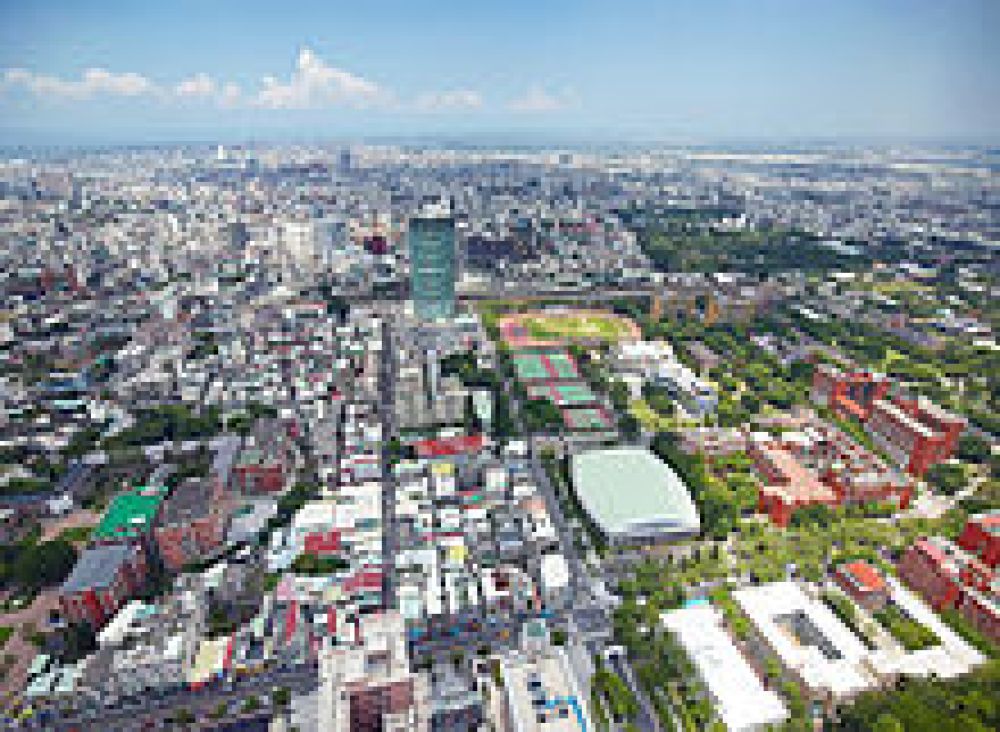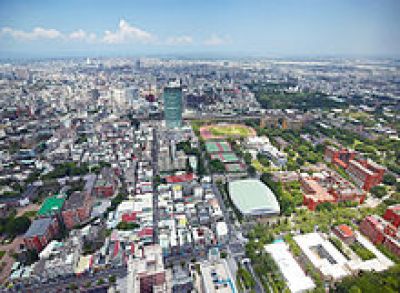

Chihkan Tower, also known as Fort Provintia, is a historical landmark located in the West Central District of Tainan, Taiwan. It serves as a testament to the rich cultural heritage of the region. Originally built by the Dutch during their occupation in the 17th century, it was later repurposed and renovated by the Qing Dynasty and the Japanese colonial administration. Visitors to Chihkan Tower can explore the remnants of the Dutch stronghold, admire the ornate architectural details, and gain insights into the complex history of foreign influences in Taiwan. Various artifacts and exhibitions are on display throughout the complex, showcasing its storied past. The site is also home to beautiful gardens and provides a tranquil setting for guests to relax amidst historical surroundings. As a significant cultural attraction, Chihkan Tower is a must-visit for history enthusiasts and travelers looking to delve into Tainan's past.
The Anping Tree House is a unique attraction located in Tainan's Anping District, amazing visitors with the way nature has taken over what was once a warehouse owned by the Tait & Co. trading company. Over time, a large banyan tree has grown through the building, making it a captivating site where history and nature merge. The tree's extensive roots and branches have become entwined with the building's structure, creating a surreal and almost mystical atmosphere. The site features walkways and platforms that allow visitors to explore up close and appreciate the impressive scale of the natural growth intertwined with human history. It provides excellent opportunities for photography and is an evocative place to reflect on the transient nature of human constructs versus the relentless force of nature. A visit here is an exercise in wonder and imagination, as guests are invited to consider the storied past of the region as well as the transformative power of the natural world.
The Tainan Flower Night Market, known locally as 'Huayuan Night Market', is the largest and most famous night market in Tainan. Packed with a wide array of street food vendors, game stalls, and shops selling clothes and accessories, it offers an authentic Taiwanese night market experience. Foodies will revel in the variety of Taiwanese snacks available, from stinky tofu and oyster omelets to bubble tea and sweet desserts. Visitors should come hungry and ready to explore the bustling aisles, bargaining with vendors, and soaking up the vibrant atmosphere. The market is not only a place to enjoy mouth-watering eats and shop for trinkets, it's also a cultural experience, providing a glimpse into the everyday life and night-time entertainment for the locals. Strolling through the Flower Night Market is an assault on the senses in the best way possible and a must-do activity for those wanting to experience local Tainan life after dark.
The National Museum of Taiwan History is an institution dedicated to preserving and showcasing the multifaceted history of Taiwan. It is located in the Annan District of Tainan and presents a modern, comprehensive narrative of the island's rich and often complex past. The museum features a wide array of exhibits, from ancient artifacts to contemporary pieces, illustrating the influences of indigenous cultures, colonial periods, and the development of modern Taiwanese society. The exhibitions are meticulously curated, offering insightful perspectives into the events that have shaped Taiwan. Interactive displays and multimedia presentations engage visitors of all ages, making history accessible and compelling. As one of the most important cultural institutions in Taiwan, the museum provides a profound understanding of the social, economic, and political transformations the island has undergone. Aside from its permanent collections, the museum often hosts special exhibitions and educational programs, making every visit a potentially unique experience.
Anping Fort, originally named Fort Zeelandia, is a historic fortress situated in the Anping District of Tainan, Taiwan. Built by the Dutch East India Company in the early 17th century, this site played a significant role in the colonial and military history of Taiwan. Today, Anping Fort stands as an emblem of the cultural fusion that characterizes the island, with traces of Dutch, Chinese, and Japanese influences visible in its architecture and the surrounding area. The fort comprises remains of the original structure, historical artifacts, and informative displays that narrate the struggles for control and the exchange of cultures in Taiwan. A climb up the observation tower offers panoramic views of the surrounding district and the Taiwan Strait. The site also includes a statue of Koxinga, a national hero famed for expelling the Dutch and establishing the first Chinese rule in Taiwan. Anping Fort is not just an attraction for those interested in history; it's a symbol of resilience and the complex layering of Tainan's cultural legacy.
The Confucius Temple in Tainan is known as the 'First Academy of Taiwan,' and it's a place of significant cultural and educational importance. Established in 1665 during the Koxinga era, this temple is recognized as the oldest Confucius Temple in Taiwan. It offers a serene and respectful environment to learn about Confucian philosophy and traditional Chinese culture. The architecture follows the Song Dynasty style, which emphasizes simplicity and modesty, reflecting Confucius' teachings on aesthetics and moral values. Visitors can admire the well-preserved ancient buildings, including the Dacheng Hall, the main hall where a statue of Confucius resides. Beautifully landscaped grounds invite contemplation and provide a peaceful escape from the bustle of the city. The temple also hosts various cultural events and ceremonies throughout the year, such as the grand annual commemoration of Confucius' birthday. Rich in both historical and philosophical significance, the Confucius Temple in Tainan is a place that nurtures the soul and educates the mind.
The Hayashi Department Store stands as a historical symbol and a pillar of Tainan's urban culture. Opened in 1932, during the Japanese colonial period, it was the first department store in what was then the city of Tainan and remains a prominent feature of the cityscape today. After undergoing restoration, the building now serves as both a glimpse into the colonial past and a functioning modern shopping experience, merging historical ambiance with contemporary consumer culture. Visitors can explore shops selling an array of local products, designer items, and cultural souvenirs. The upper floors host exhibitions and spaces dedicated to Tainan's history and the building's own stories. One of the highlights is the rooftop shrine, offering a unique look at the religious practices of the time. With its striking architecture and elegant interior, Hayashi Department Store is more than just a place to shop; it's a venue to experience the living history and continuing evolution of Tainan.
Shennong Street, located in Tainan's West Central District, is a historic and picturesque street that offers a blend of culture, art, and commerce. This narrow, winding street is lined with quaint, traditional Taiwanese shop-houses that date back to the Qing Dynasty and Japanese colonial era. Today, these shop-houses are home to a mix of trendy cafés, small boutiques, art galleries, and craft shops, making it a popular spot for both locals and tourists. Walking along Shennong Street is like taking a step back in time; the well-preserved facades and retro vibes provide numerous photo opportunities and a chance to immerse oneself in the city's heritage. In the evening, the street transforms into an enchanting setting with its buildings beautifully lit, enhancing its old-world charm. Shennong Street is the perfect destination for those who want to indulge in leisurely exploration, appreciate local arts and crafts, or simply enjoy a quiet moment amidst the echoes of history.
The Ten Drum Ciatou Creative Park is an innovative cultural and performing arts venue situated in the Ciaotou District of Tainan. What sets this park apart is its unique setting within a repurposed sugar refinery, which now serves as a hub for creative expression and entertainment. Visitors to the park can enjoy exhilarating drum performances by the internationally acclaimed Ten Drum Art Percussion Group, which performs regularly in this atmospheric space. The park also features various interactive drumming experiences, workshops, and exhibitions, which delve into the art of percussion and its history. For those seeking adventure, there are silos converted into climbing walls and a slide to bring out the inner child in every visitor. The blend of historic structures with artistic endeavors creates a dynamic atmosphere where culture, history, and creativity converge. This park is an excellent choice for families, music enthusiasts, and anyone looking to engage with Taiwan's contemporary creative scene.
Taijiang National Park, established in 2009, is a haven of natural beauty and a testament to ecological conservation in Taiwan. Spanning the coastal area of Tainan, the park encompasses wetlands, lagoons, mangrove forests, and sandbars, providing diverse habitats for a wide range of wildlife, especially migratory birds. Visitors can take guided eco-tours to explore the unique landscapes and observe the rich biodiversity that calls this area home. The park also highlights the historical significance and cultural traditions of the local fishing communities and the Siraya indigenous people. There are boat tours available that cruise along the waterways, offering a tranquil experience and a different perspective of Tainan's environment. Additionally, the park's visitor centers provide educational exhibits and detailed information about the park's ecology and conservation efforts. Taijiang National Park is a place where nature, culture, and history blend harmoniously, offering a multifaceted experience for all who wander its paths.
